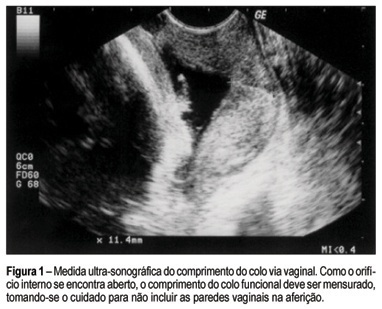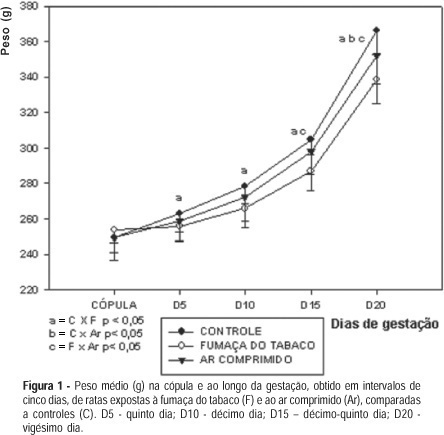Summary
Revista Brasileira de Ginecologia e Obstetrícia. 1999;21(1):13-17
DOI 10.1590/S0100-72031999000100003
Purpose: to evaluate if the nipple stimulation performed by primigravidae, at 40 weeks, modifies Bishop index. Method: 64 primigravidae, without clinical or obstetrical complications were studied, in two groups. One group, called nipple stimulation group (N.S.G.) had 29 pregnant women. The other, named control group (C.G.) included 35 pregnant women. The N.S.G. performed the nipple stimulation test, bilaterally, from left to right, for two minutes followed by five minutes of rest, during thirty minutes. The test was done three times a day up to 41 weeks of pregnancy or beginning of labor. Statistical analysis of the results was performed using Student's t test, with 5 % significance. Results: once nipple stimulation was completed in the N.S.G., it was compared with the C.G. considering time of delivery. The results showed no significant differences between the groups regarding cervix modification, according to the Bishop index. Conclusions: there were no differences of the Bishop index in primigravidae, with more than 40 weeks of pregnancy, who performed nipple stimulation test, when compared with pregnant women of the control group.
Summary
Revista Brasileira de Ginecologia e Obstetrícia. 2006;28(11):664-670
DOI 10.1590/S0100-72032006001100006
PURPOSE: to assess the role of ultrasonographic cervical length in predicting premature labor in patients presenting persistent uterine contractions and intact membranes. METHODS: a prospective observational cohort study was performed in 45 women admitted to our hospital between 22 and 34 weeks of gestation. Transvaginal sonographic evaluation of the cervix was performed once in the women who had completed a course of parenteral tocolysis. The cervical length was obtained according to criteria reported previously. Cervical sonographic findings were not used in diagnosis and management. Outcome variable was the occurrence of preterm delivery (<37 weeks). Statistical analysis consisted of univariate method with the purpose of determining the significant contribution of cervical length to the prediction of preterm delivery. The adopted significance level was 5% (p<0,05) and the confidence interval was 95% (95% CI). RESULTS: the incidence of preterm delivery was 51.11% (23/45). Cervical length was significantly associated with the outcome (p<0.0001). Receiver operating characteristic curve analysis showed that a cervical length of 20 mm was the best cutoff in predicting preterm delivery (sensitivity 86.9%; specificity 81.8%; positive predictive value 83.3%; negative predictive value 85.7%). The calculated area under the curve was 0.91 (95% CI: 0.79-0.97; p<0.0001). CONCLUSIONS: among women with persistent uterine contractions and intact membranes treated for preterm labor, a cervical length of less than 20 mm demonstrated a high likelihood of preterm birth. Transvaginal ultrasound may improve the accuracy of diagnosis in symptomatic women.

Summary
Revista Brasileira de Ginecologia e Obstetrícia. 2006;28(10):596-600
DOI 10.1590/S0100-72032006001000005
PURPOSE: To analyze gestation evolution and deliveries after myoma treatment by embolization of the uterine arteries. METHODS: In the initial evaluation, 112 patients submitted to embolization of uterine arteries were included for treatment of myoma. From those, only nine wanted to be submitted to conservative treatment in order to keep their reproductive capacity. This procedure was indicated to the nine patients, since they were not susceptible to a conservative surgical treatment. They were submitted to embolization of the uterine arteries with particles of polyvinyl alcohol or embospheres with diameters ranging from 500 to 700 µm, and they have evolved without intercurrence. RESULTS: During the follow-up of these patients, there was a good clinical response with significant reduction in the uterus and myoma volumes. Four of them got pregnant, two had an early abortion and two evolved normally till the end of gestation with a term delivery. One of these had twins. CONCLUSION: Embolization of the uterine arteries is an option for the treatment of uterine myoma, and presents good clinical and anatomical results, allowing patients to preserve their reproductive capacity.
Summary
Revista Brasileira de Ginecologia e Obstetrícia. 2006;28(9):557-564
DOI 10.1590/S0100-72032006000900009
Pregnant women may depend on the use of medications to minimize the problems caused by preexisting disease, and pregnancy itself can cause situations that compromise the maternal well-being and that require treatment. The obstetrician should be aware of the placental transfer of drugs and of fetal exposure to teratogenic or toxic agents that might compromise the development of the fetus or even its future life.Transport through the placenta involves the movement of molecules between three compartments: maternal blood, cytoplasm of the syncytiotrophoblast, and fetal blood. This movement can occur through the following mechanisms: simple diffusion, facilitated diffusion, active transport, class P, V, F and large ABC family pumps, and endocytosis. With the use of anticonvulsants the incidence of major malformations in exposed newborns is 4 to 6%, compared to 2 to 4% in the general population. Multidrug treatment is more damaging, especially when valproic acid and hydantoin are part of the combination. The recommendation for epileptic patients who have been clinically asymptomatic for two years is to discontinue the drugs they are taking. However, if seizures occur it is advisable to consult a neurologist to discuss anticonvulsant therapy with better benefits and less side effects.Local anesthetics and opioids are extensively used during the resolution of pregnancy. Lidocaine applied by the perineal route for episiotomy at a fixed dose of 400 mg presents a high concentration in maternal plasma and a high rate of placental transfer at the time of birth, with the need for caution regarding the use of repeated doses. Bupivacaine administered by the epidural route is a safe anesthetic which is present in the racemic form and has a placental transfer of about 30%. Fentanyl, an opioid anesthetic used by the epidural route in resolution of cesarean section at the fixed dose of 0.10 mg, presents high rates of placental transfer of the order of 90%, requiring caution with the use of repeated doses for analgesia during labor.
Summary
Revista Brasileira de Ginecologia e Obstetrícia. 2006;28(7):397-402
DOI 10.1590/S0100-72032006000700004
PURPOSE: to compare the uterine cervix measurements and funneling obtained by two- and three-dimensional transvaginal sonography during pregnancy. METHODS: a prospective, descriptive study, with group comparison, was carried out between April 2004 and February 2005 in 74 pregnant women, who were between the 19th and 24th week of pregnancy, regardless of risk factors for premature delivery. The ultrasound examination of the cervix was carried out only once in the same patient and by only one observer. The measurements of the cervix by two-dimensional ultrasound were made at the time of the test and by three-dimensional ultrasound at intervals of 7 to 15 days after the two-dimensional ultrasound. The measurements of cervical length, funnel width and length were taken by two-dimensional ultrasound in the sagittal plane and by three-dimensional in the sagittal plane as well as in coronal plane. RESULTS: there was no significant difference between the averages of the measurements of the cervix obtained by two- and three-dimensional ultrasound in the sagittal plane (p=0.23); however, there was a difference in the averages of the measurements of the cervix obtained by two-dimensional ultrasound in sagittal plane and three-dimensional ultrasound in the coronal plane (p=0.009) and between three-dimensional ultrasound in the sagittal and coronal planes (p=0.001). The kappa test (0.86) showed no superiority of either the two-dimensional and three-dimensional ultrasound in the visualization of the cervical funnel. No statistically significant difference was observed between the methods when the average of the measurements of funneling was compared (p>0.05). CONCLUSION: there were differences between two-dimensional and three-dimensional ultrasound of cervical length, only using the coronal plane of the three-dimensional ultrasound.
Summary
Revista Brasileira de Ginecologia e Obstetrícia. 2006;28(6):331-339
DOI 10.1590/S0100-72032006000600003
PURPOSE: to evaluate the impact of supplementary ferrous sulfate and dietary counseling on hemoglobin levels in pregnant women. METHODS: a total of 197 pregnant women were evaluated during antenatal care at a health center. The treatment group consisted of 105 women who were prescribed 60 mg dietary iron per day, received dietary counseling and had hemoglobin measured by a portable photometer between the 14th and 20th week of pregnancy. The treatment group was reevaluated according to hemoglobin levels and food intake by a semiquantitative food frequency questionnaire after the 34th week of pregnancy. The control group consisted of 92 women in a cross-sectional study, at no less than 34 weeks of pregnancy. Hemoglobin was analyzed by a portable photometer and anemia was defined concentrations of less than 11 g/dL. All pregnant women had their weight and height measured. Hierarchical logistic regression model was developed for the multivariate analysis. RESULTS: prevalence of anemia at the end of the third trimester was 31.6% in the treatment group and 26.1% in the control group (p=0.43). Use of the prescribed supplement was reported by 65% of women in the treatment group, of which 67.7% interrupted the treatment at some point. Principal reasons for interrupting treatment were forgetting (43.2%) and nausea or vomiting (27.2%). Risk of anemia in the third trimester was three times higher in women with less than 8 years of schooling. CONCLUSIONS: use of ferrous sulfate was not shown to be associated with lower prevalence of anemia. The results suggest that structural changes in socioeconomic conditions are needed in order to alter the current situation regarding iron deficiency anemia.
Summary
Revista Brasileira de Ginecologia e Obstetrícia. 2006;28(3):143-150
DOI 10.1590/S0100-72032006000300002
PURPOSE: to analyze the effect of cigarette smoke on weight gain and food consumption of female pregnant rats, as well as of their offspring's weight and length at birth METHODS: Wistar rats were studied from the second day until the end of pregnancy. Fifty-one female rats were divided into three groups: Group F: 15 rats exposed to tobacco smoke (2 cigarettes/animal/day) plus air flush (10 L/min); Group Air: 18 rats exposed to air flush only (10 L/min); Group C: 18 non-exposed, non-manipulated controls. Body weight was measured every 5 days and food consumption every seven days (expressed as medium consumption per day). Offspring weight and length were measured on the first day of life. The Lavene test was used to verify the behavior of numeric variable distribution and for parametric one-way ANOVA analysis and Student's t test were used, according to the case. Results with p<0.05 were considered to be statistically significant. RESULTS: the rats of Group F consumed less food per day [Group F=18.9 g (±1.2) vs Group Air=21.7 g (±1,6) vs Group C=24.2g (±1,7); (p<0,05)], gained less weight during pregnancy than the animals of the air flush group and the control group: Group F=338.9 g (±13.7) vs Group Air=352.3g (±15,9) vs Group C=366.3 g (±13.1) (p<0.05). Pups birth weight and length were significantly smaller in the smoking group when compared to controls and to the air flush group, while these last two groups did not differ: Group F=5.5 g (±0.3) vs Group Air=5.9 g (±0,5) vs Group C=5.9 g (±0.4) - (p<0,01); Group F=6.8 cm (±0.2) vs Group Air=6.9 cm (±0,2) vs Group C=6.9 cm (±0.1) - (p<0.05), respectively. CONCLUSIONS: tobacco smoke exposure reduced the weight gain and food consumption during pregnancy and reduced the offspring weight and length evaluated at birth.

Summary
Revista Brasileira de Ginecologia e Obstetrícia. 2006;28(2):107-111
DOI 10.1590/S0100-72032006000200006
PURPOSE: we report a small series of pregnant women who underwent gastric bypass surgery for severe obesity, with a review of the literature on this topic. METHODS: five consecutive cases of pregnancy after gastroplasty between 2001 and 2004 were evaluated, and clinical, laboratory and therapeutic features were considered. Patients were 30 to 34 years old and all had been submitted to gastroplasty by the Capella technique. The outcomes for both the pregnant woman and the fetus were evaluated. A search of the English language literature was done through MEDLINE and Web of Science databases with the following terms: gastroplasty, gastric bypass surgery, bariatric surgery, and pregnancy. RESULTS: all 5 pregnancies were singleton. No major obstetric complications were observed and there were no premature or lowbirth weight infants. CONCLUSION: our data suggest that pregnancy following gastroplasty is safe for mother and fetus. However, since information about this topic is limited, further investigations are required to establish appropriate recommendations concerning the follow-up of these pregnancies.